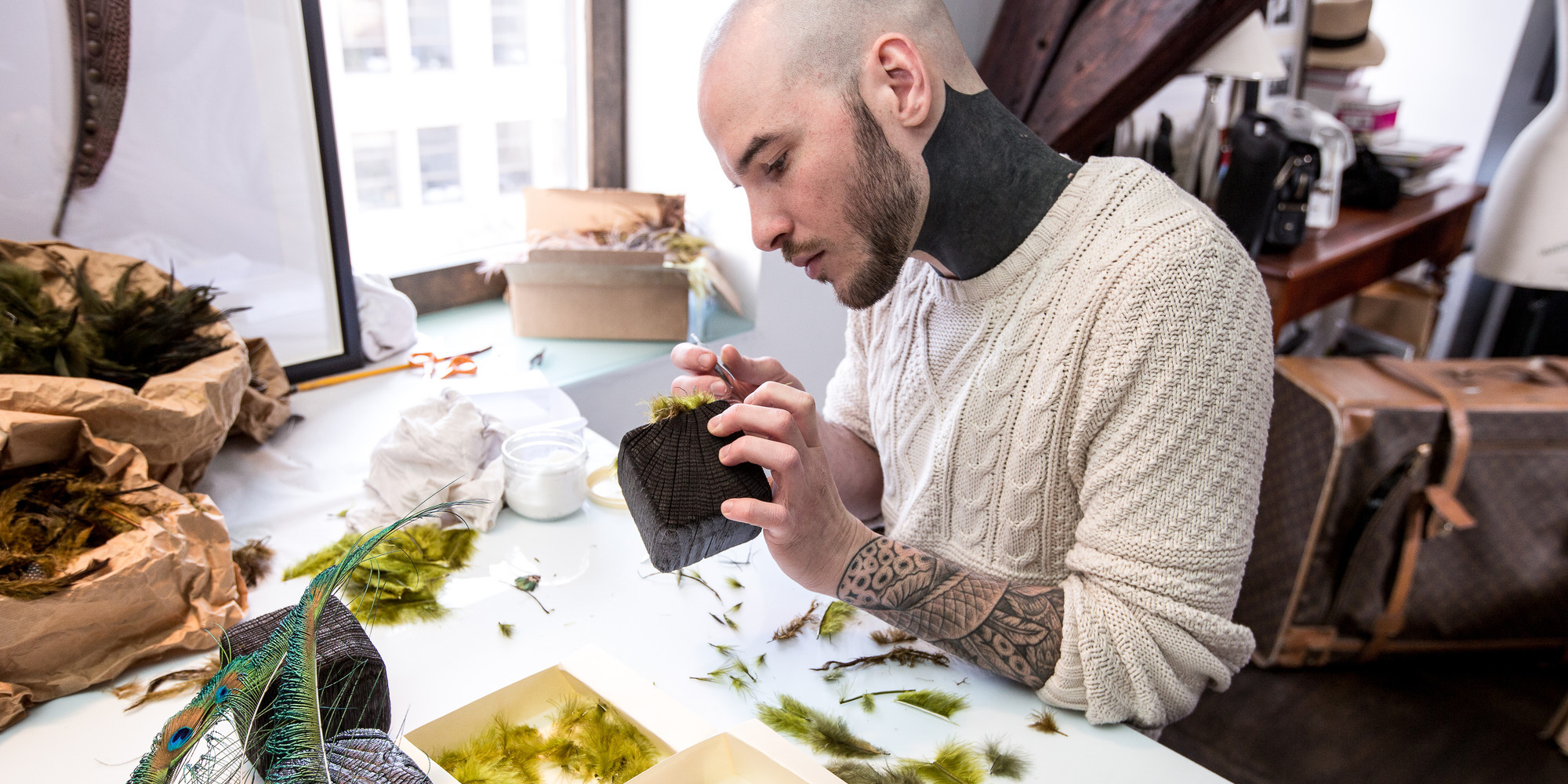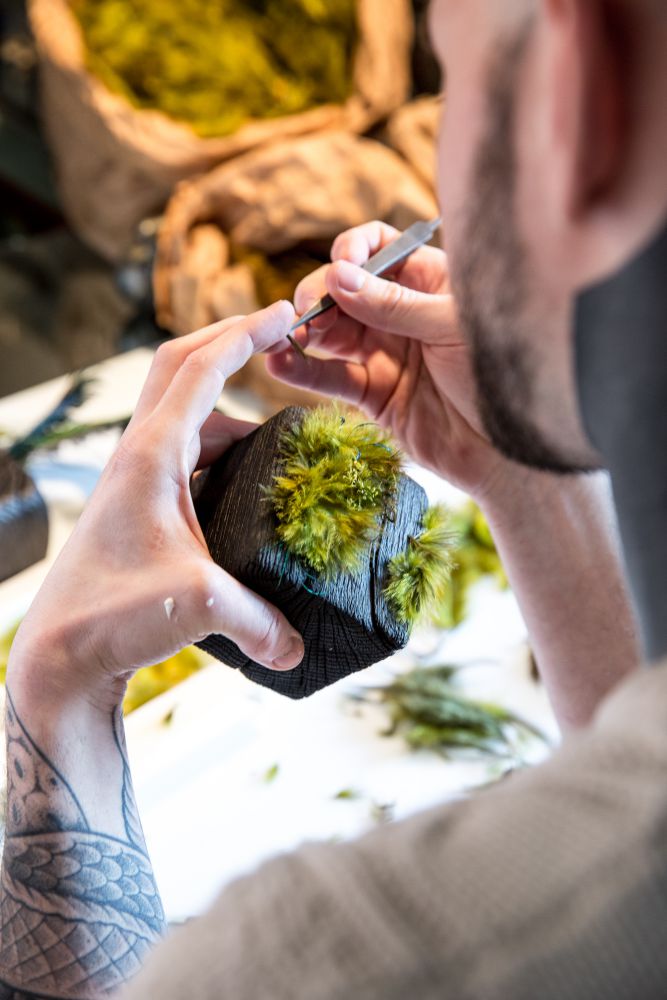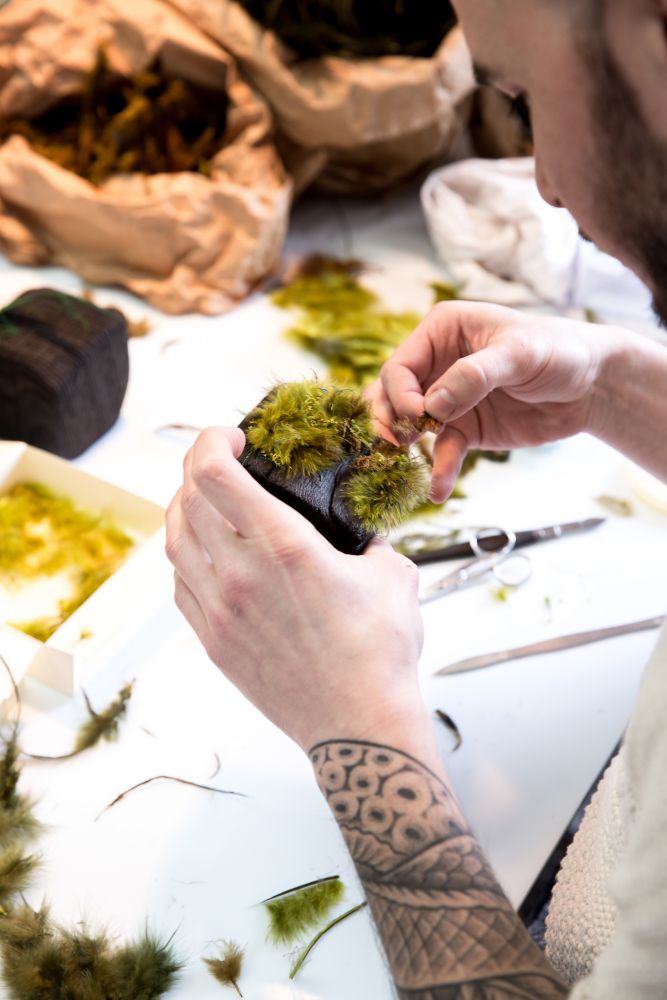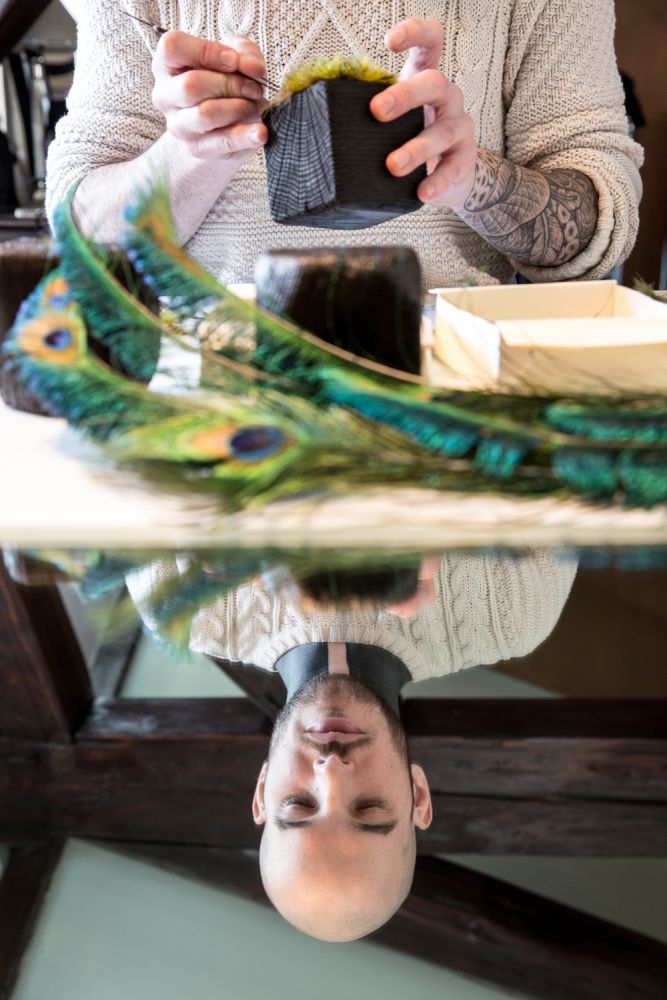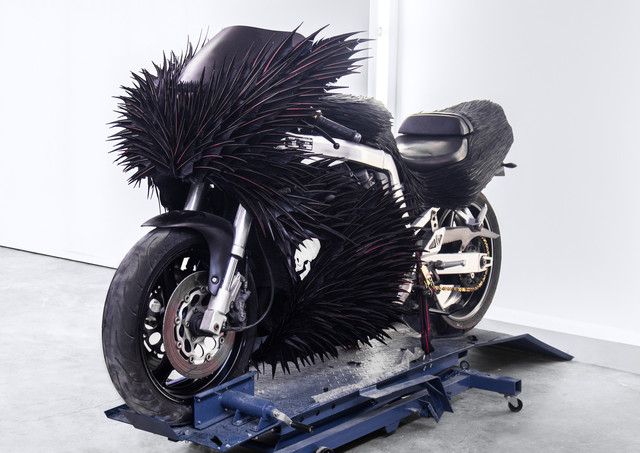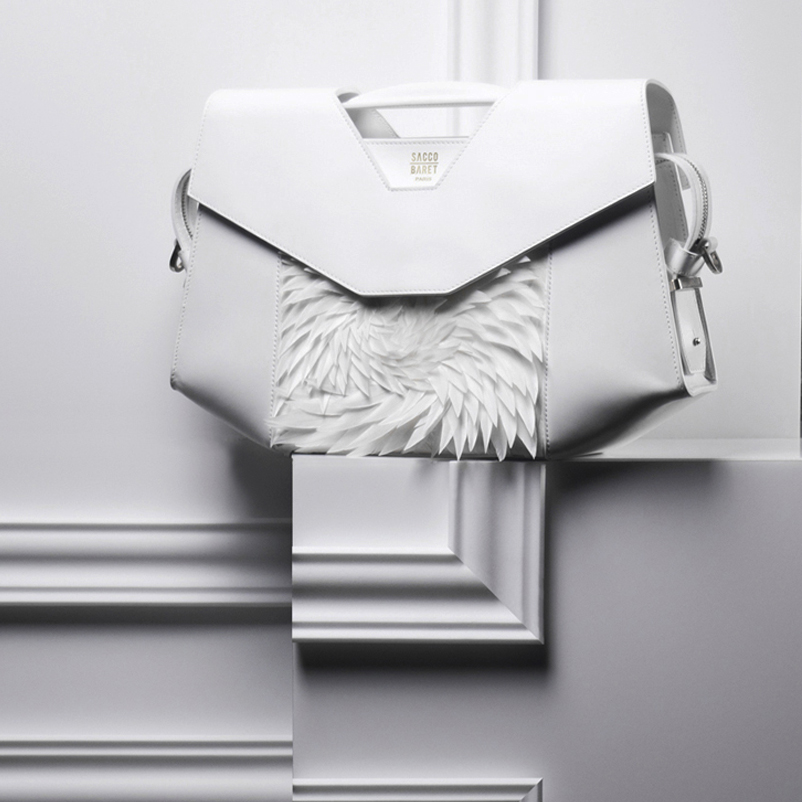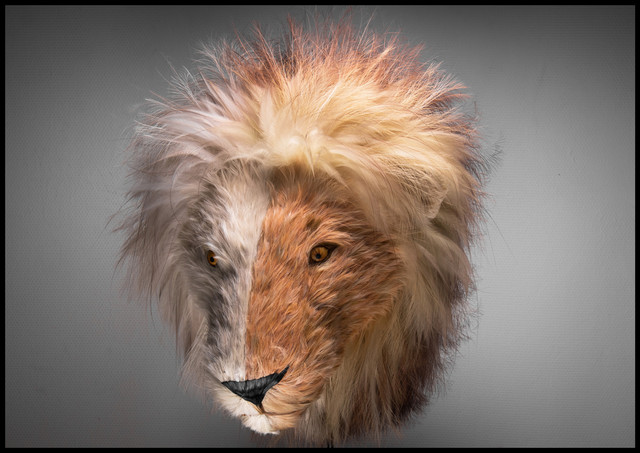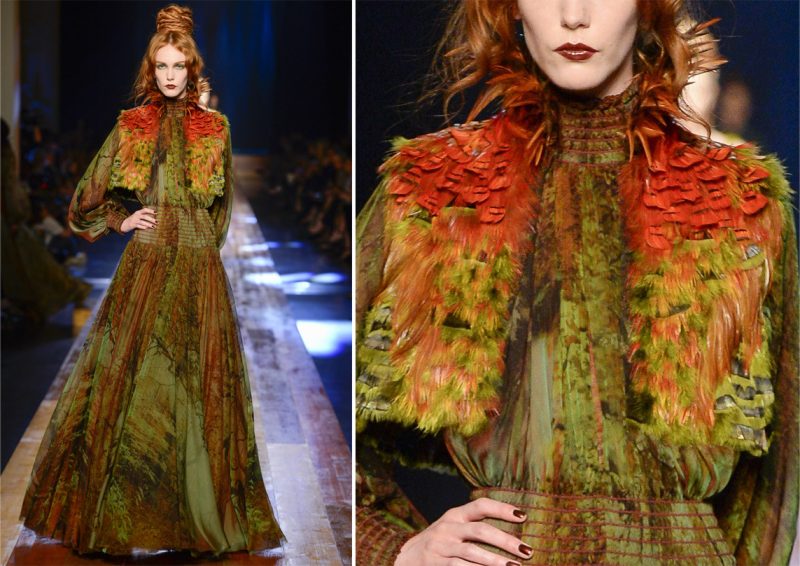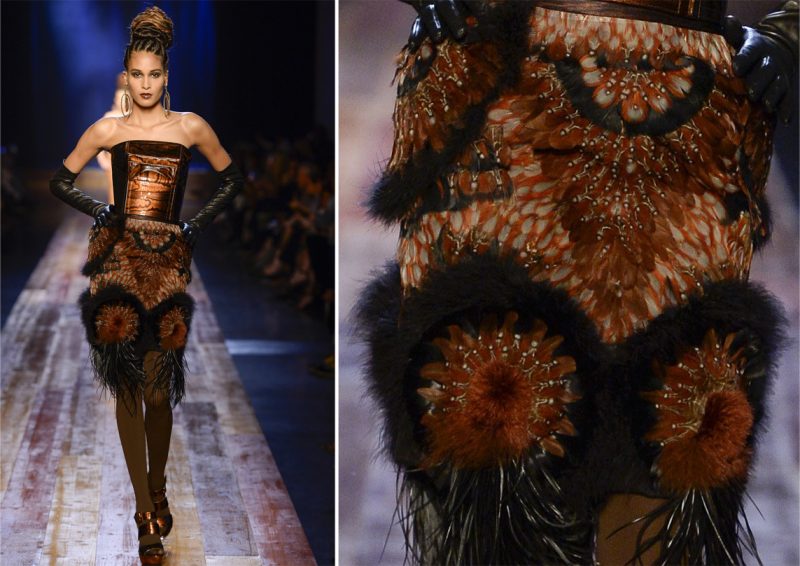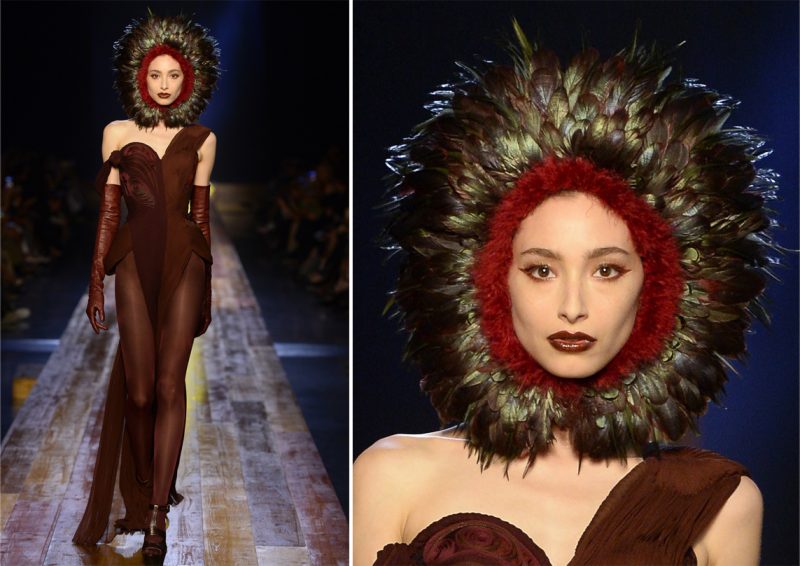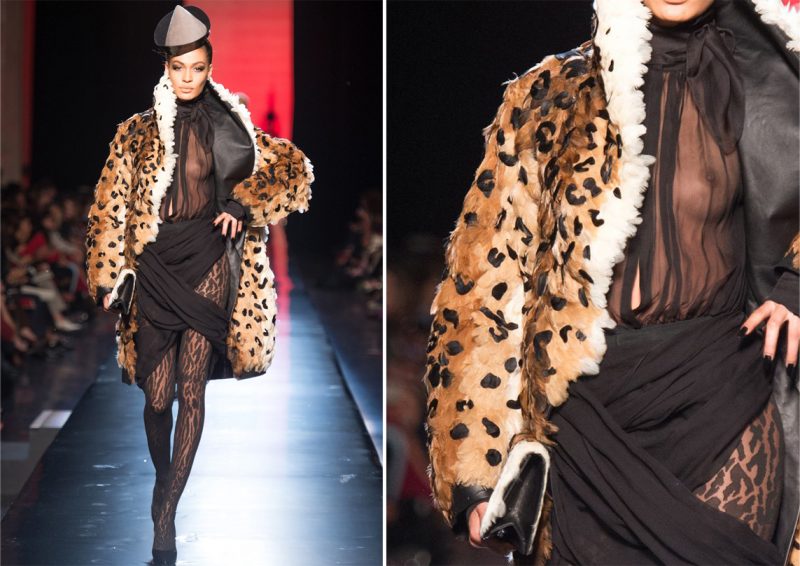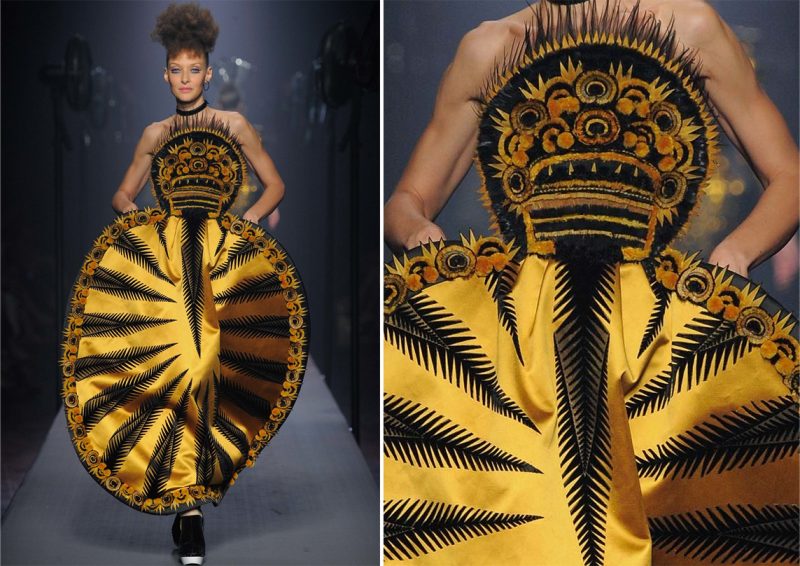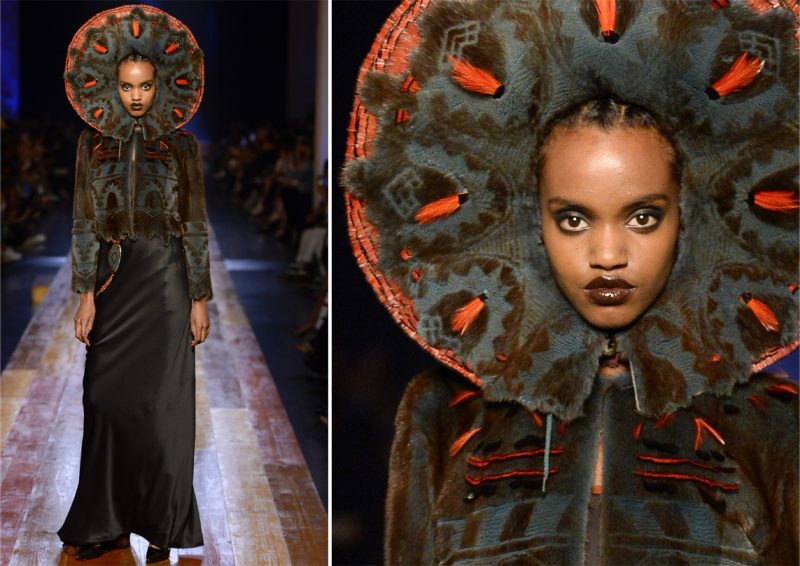Maxime Leroy, Plumassier and Prix de la Jeune Création Métiers d'Art
Plumassier Maxime Leroy in his atelier/ Photo: © Julien Cresp
There is a new generation of creative people working with or dealing in ornamental plumes or feathers. Amongst the latest plumassiers making their mark in this specialized trade is Maxime Leroy, who won one of the three Prix de la Jeune Création Métiers d'Art for 2017 which is given each year by the Ateliers Art de France, the professional Syndicat of Métiers d’Art.
Leroy learned his craft under Dominique Pierre and Nelly Saunier at the professional school, Le lycée Octave-Feuillet, the only place in the world where you can still learn the trade .
He founded his own atelier in Paris in 2013, and also co-founded with designers Paul Baret and Jayma Sacco, the French luxury brand Sacco-Baret, which creates high-end accessories such as handbags and shoes, some including feathers.
“Everything is possible with feathers,” the young plumassier says, and to demonstrate his belief he has created several unusual pieces such as covering a motorbike with feathers, which was commissioned by the Palais de Tokyo, a pair of sneakers with feathers for Sacco-Baret, and the head of a lion for a competition using about 30 different types of feathers, which he burnt with acid to color them and give the appearance of fur.
"Sometimes I feel like the ugly duckling of the feather world, as my creativity runs wild. My only limit is in respecting the material,” he says.
The art of plumassery or working with feathers for ornamental purposes dates back to the 17th century when plumassiers had their own Guild in Paris. It had its heyday in the 19th century and early 20th century (La Belle Époque) when the number of peacocks increased spectacularly in Europe and a roaring trade of ostrich feathers out of South Africa allowed fashionable ladies to sport magnificent hats with large feathers. Back then there were 800 plumassiers in Paris alone, but their numbers had fallen to fewer than 10 by the 1980s.
Since 1973, the trade in feathers has been regulated by the Washington Convention in order to protect wild and exotic birds so obtaining certain feathers requires the development of close relationships with zoos (to buy feathers that have fallen naturally), or regular strolls through antique markets and visits to auctions. Feathers from farmed birds (such as ostrich) can easily be bought and the sale of feathers has become a profitable by-product of the poultry industry.
Leroy says the feathers he usually uses are old stocks and “not in the best of state,” and so he spends a lot of time restructuring the feathers.
While large-sized feathers are now often associated with showgirls in Las Vegas and Victoria’s Secret Angels runway shows, they have long had a place in high fashion with couturiers like Jean Paul Gaultier (see Leroy's collaboration in the slideshow below), Dior, and Chanel Haute Couture all using them regularly. Most recently feathers have also found their way on watch dials (Harry Winston, Cartier) and jewelry cuffs (Piaget).
Some of Leroy’s pieces will be presented during the sale exhibition Empreintes in Paris (Apr 23-August 20) and will also be exhibited at the Révélations saloon (May 3-8) in Paris.
